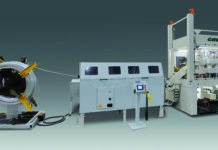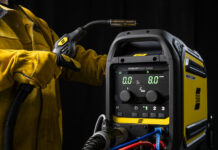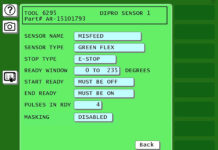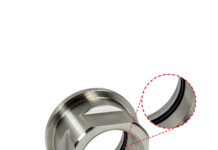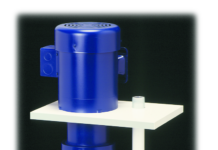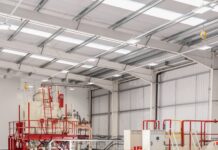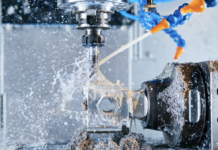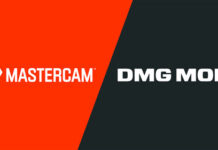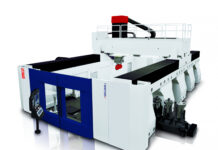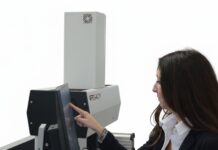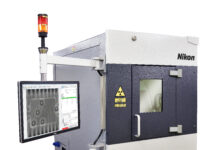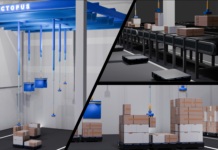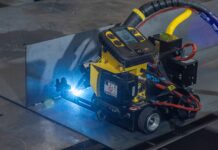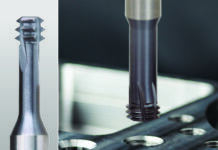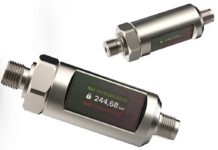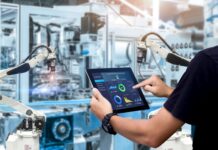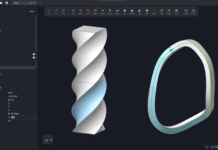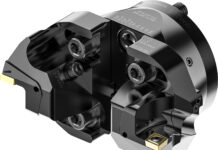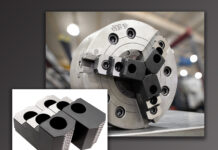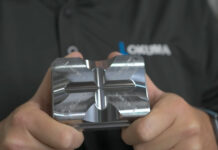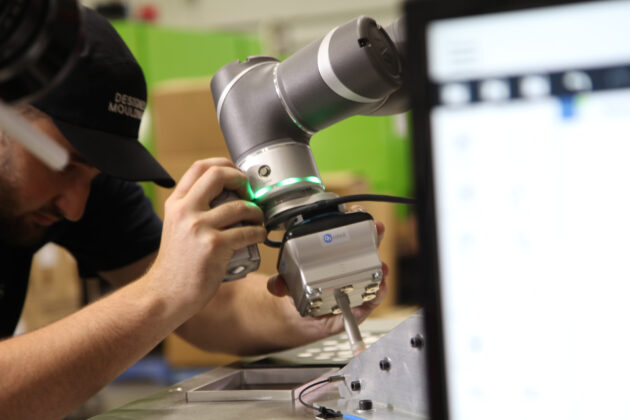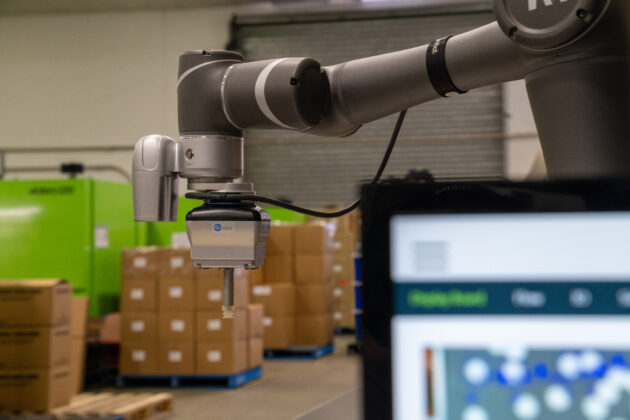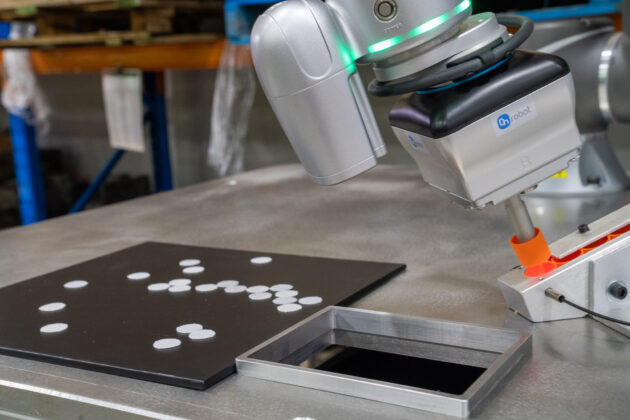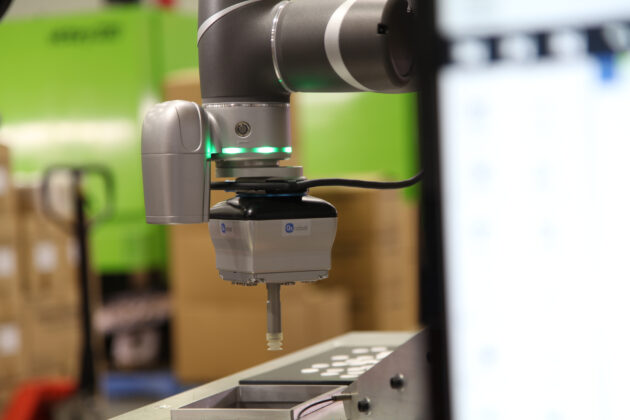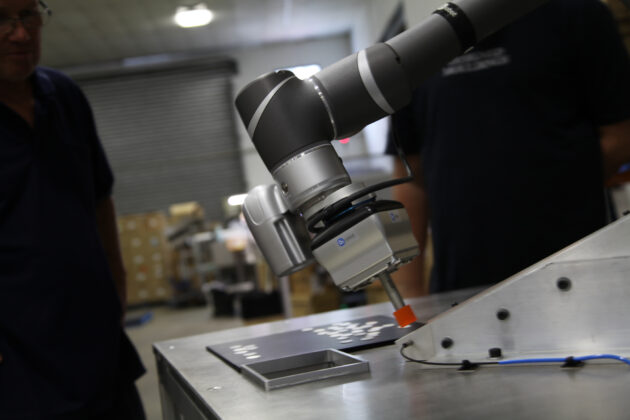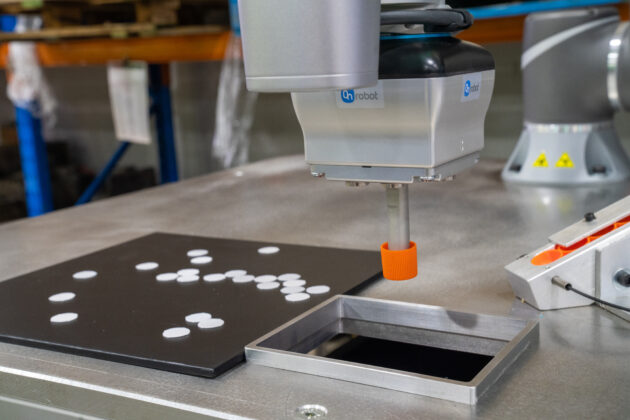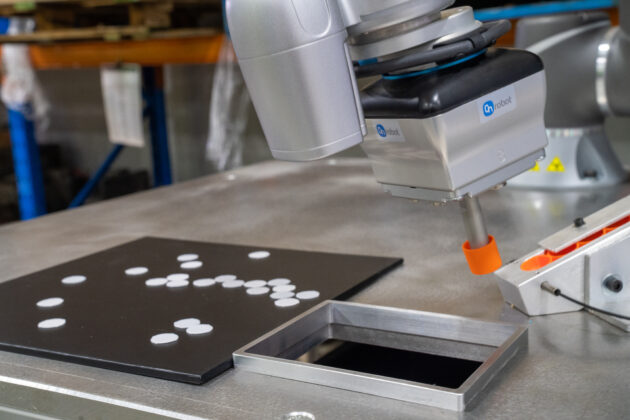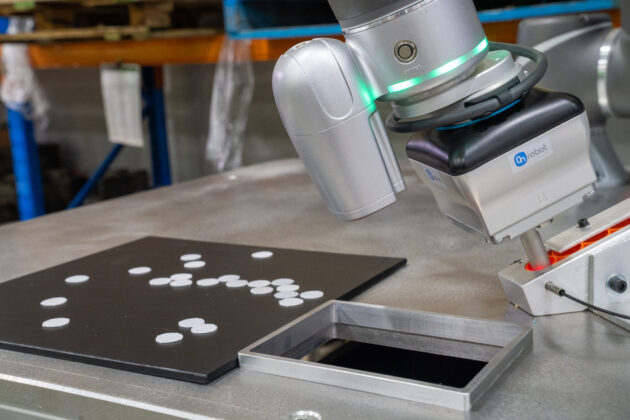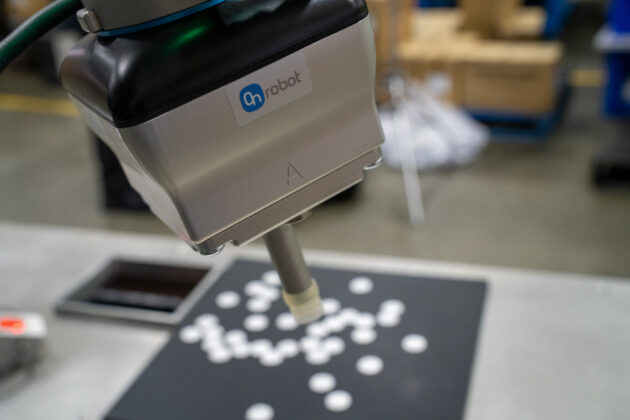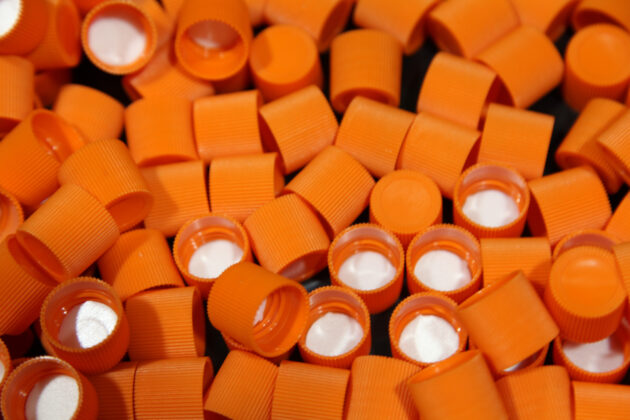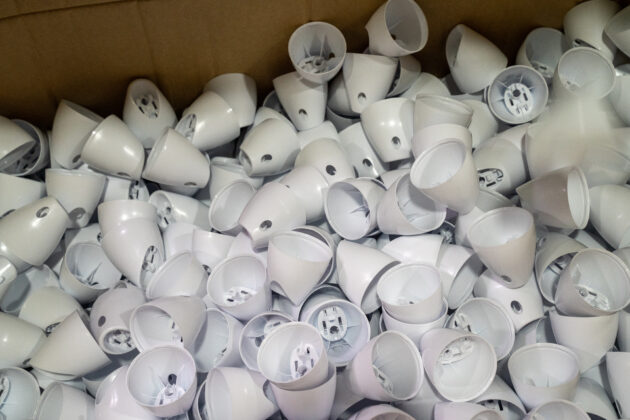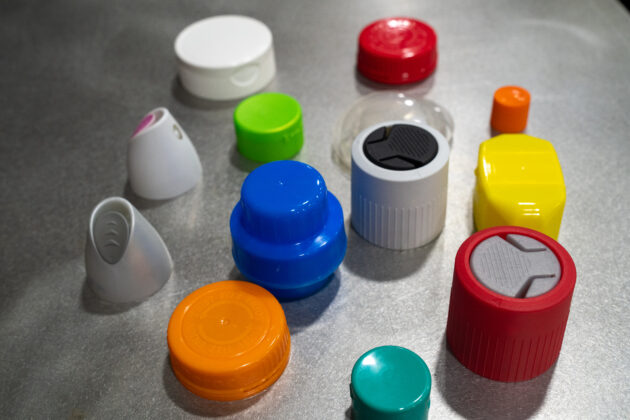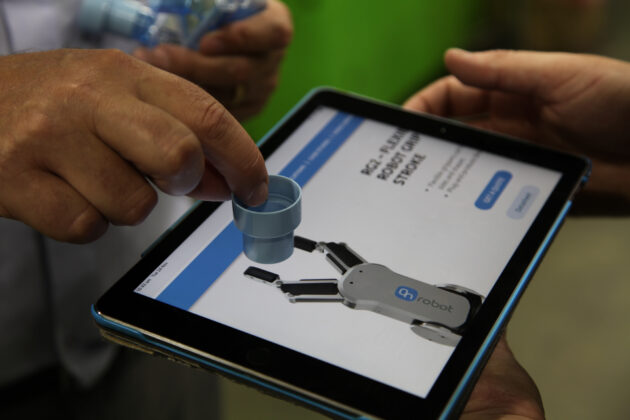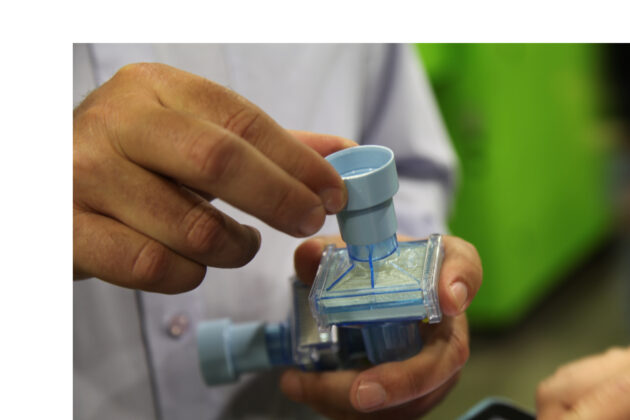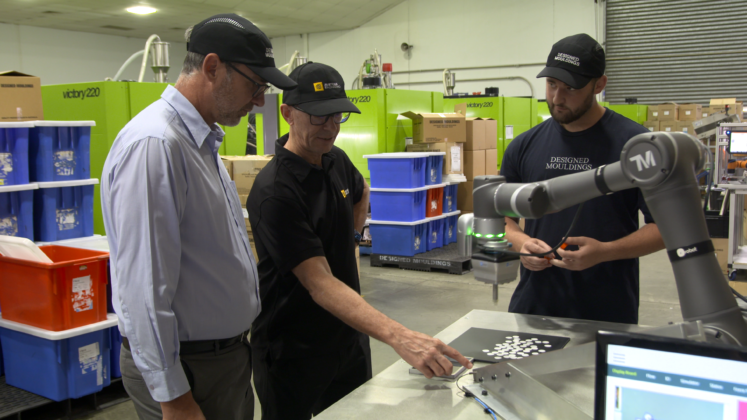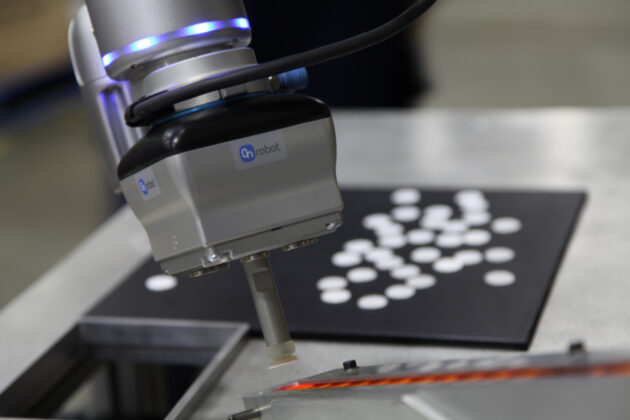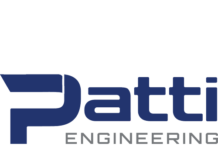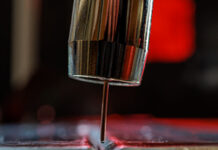In mid-2020, with global supply chains experiencing significant disruption and apparently no end in sight to the destabilizing impact of Covid-19 on international trade, Australian companies increasingly turned to local manufacturers to meet their packaging requirements.
One of the first Australian companies to experience this sudden surge in demand – in this case, for plastic caps and seals – was Designed Mouldings, a family-run injection molding specialist based in a purpose-built, 21,528 sq. ft. facility on Sydney’s southside. The facility houses 18 injection molding machines ranging in tonnage from 50-300 tons and can produce both single and multi-piece articles.
“From a production volume of 10,000 to 20,000 products a month, we were facing orders of 50,000 to 100,000 caps a month. Manual assembly was no longer a viable option for us,” says Paul Neumeyer, Managing Director of Designed Mouldings, who wanted to find a way to automate the sealing of wads on plastic caps. Wads are used to seal containers and protect their contents from deterioration or contamination through exposure to air, moisture or other impurities.
While researching effective ways to automate this crucial assembly task, Designed Mouldings reached out to systems integrator Australis Engineering – a distributor partner for collaborative application and automation specialists OnRobot – who suggested a collaborative application-based solution.
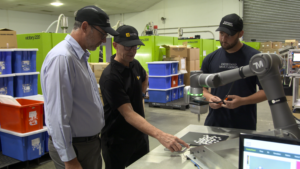
Collaborative Applications
Collaborative applications are industrial robot applications that use collaborative robots (cobots) or lightweight industrial robots. Collaborative applications are paradigm-changing in terms of the way automation is deployed in real-world settings because they enable humans and robots to safely collaborate in the same workspace. In addition, lightweight industrial robots and cobots are significantly cheaper and easier to use than traditional industrial robots, which makes collaborative automation attractive to companies of all sizes, including those with limited budgets for new equipment.
Consequently, cobots are the fastest-growing segment of the industrial robotics sector, according to the International Federation of Robotics, with adoption growing at a rate four times faster than that of traditional industrial robots. Research from Emergen Research predicts that cobot sales will climb to $9.3 billion by 2027, up from $0.7bn in 2019.
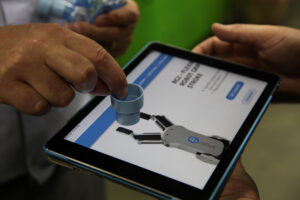 Choosing A Gripper
Choosing A Gripper
A robot without the right end-effector is just an expensive toy. So, Designed Mouldings’ first step, Australis Engineering advised, should be to select the best gripper for its collaborative sealing application.
After researching several options, the company settled on OnRobot’s VGC10 -a compact, all-electric vacuum gripper, designed to provide end-users with payload capabilities comparable to those of pneumatic grippers, but without the cost and complexity.
VGC10 offers unlimited customization to adapt to different production requirements, with changeable suction cup options supporting virtually any application requirement. In addition, the VGC10 is a small, lightweight gripper that is a perfect fit for tight spaces and facilities where space is at a premium. The VGC10 features two independently controlled air channels that allow it to act as a dual gripper with pick-up and release in the same action, further increasing efficiency and reducing cycle time.
The VGC10 can lift small, odd-shaped, and heavy objects, and being all-electric, it is completely self-contained. Unlike expensive and complicated pneumatic grippers, the VGC10 is designed to demystify automation deployments. In addition, the VGC10’s simplicity ensures significantly reduces maintenance costs and Total Cost of Ownership (TCO). Easy to program via intuitive software, the VGC10 makes for quick and easy deployments and greater production flexibility for end-users.
Since the VGC10 provides seamless integration with all leading robot brands, Designed Mouldings’ options were virtually limitless, but the company eventually settled on a Techman Robot and set up its collaborative assembly application.
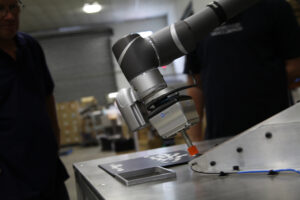 Efficient Collaborative Automation
Efficient Collaborative Automation
First, the cobot’s vision system detects the wad on a table and the cobot sends instructions to the VGC10 gripper to pick the wad up. The gripper then inserts the wad into the bottom of each plastic cap. Once the wad has been fitted, the gripper drops the assembled cap into a hole in the center of the table, where finished goods are stored before being packed and shipped.
Simplicity and Ease of Implementation
Because the VGC10 gripper works as a stand-alone system that does not require extra cabling, piping or air, the result was an easy-to-deploy solution with a small footprint.
“We were able to do the complete installation and programming ourselves within just three to four days,” says Daniel Neumeyer, Plant Supervisor at Designed Mouldings. “The simplicity saves us a lot of expensive engineering hours that is usually required with typical automation projects.”
Furthermore, after a straightforward risk assessment, both robot and gripper could be deployed safely alongside human workers without the need for additional safety fencing or guarding, which further reduced the setup time required.
OnRobot’s One System Solution (OSS) and Quick Changer offerings – integrated features of all OnRobot products, including the VGC10- further simplified the setup process. Quick Change and OSS ensure that OnRobot customers have a fully integrated, easy-to-use, unified mechanical and electrical interface for any OnRobot end-of-arm tooling. OnRobot won a Robotics Business Review’s RBR50 Innovation Award in 2020 for OSS, which effectively turns all OnRobot’s products into multi-purpose solutions that can be attached, programmed, and changed in minutes.
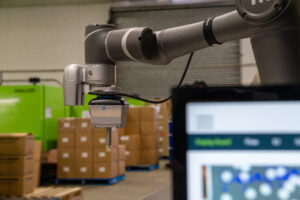 Benefits Aplenty with Collaborative Application
Benefits Aplenty with Collaborative Application
The shift from manual hand assembly to collaborative automation enabled Designed Mouldings to shorten its production cycle time, increase productivity, and maintain consistent output quality. The company has also seen a reduction in material waste by one to two percent, and Designed Mouldings’ workforce has been freed from tedious, unergonomic manual labor – enabling operators to focus on higher-value tasks.
“The OnRobot VGC10 gripper can easily complete a 20,000-product run in 24 hours – three times faster than if it were done manually. With a constant stream of jobs, we expect to achieve ROI in six months,” says Managing Director, Paul Neumeyer.
With the OnRobot-based collaborative automation solution handling repetitive aspects of assembly, Designed Mouldings has been able to cope with a massive increase in orders without putting pressure on its current workforce or having to hire temporary staff.
New Automation Possibilities
Following Designed Mouldings’ successful deployment of collaborative automation using the VGC10, the company is currently exploring additional collaborative applications. In particular, say the Neumeyers, Designed Mouldings is interested in using the OnRobot RG2 gripper to assemble filters for hospitals.
Collaborative automation enables companies like Designed Mouldings to future-proof operations and processes in an increasingly cutthroat and sometimes chaotic global manufacturing environment.
“As one of the leading injection moulding companies in the industry, ensuring we stay competitive is crucial. Collaborative applications through OnRobot are an important step towards securing our future and enhancing our competitive edge,” says Paul Neumeyer.
Denmark-based OnRobot has emerged as a major innovator in the end-of-arm-tooling market via its ever-expanding range of peripherals for collaborative applications. Designed to simplify quality control, materials handling, machine tending, assembly, and surface finishing applications, OnRobot’s easy to use, all-electric product range includes grippers, 2.5D vision technology, force/torque sensors, the world’s most powerful electric vacuum gripper, and the award-winning Gecko gripping technology.


